The rear suspension of the car is dependent, on two longitudinal semi-elliptical two-leaf springs with additional springs (sub-springs), with hydraulic telescopic shock absorbers
The springs have plastic gaskets between the leaves.
The front end of the spring is attached via a rubber-metal hinge to the bracket on the frame, and the rear end is attached to the shackle.
The spring is attached to the rear axle using U-bolts.
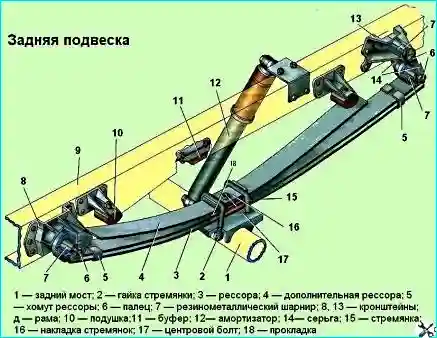
The shock absorbers are designed to dampen vibrations of the rear suspension.
The upper parts of the rods protruding from the shock absorbers are protected from dirt by rubber caps.
The upper ends of the shock absorbers are secured to a bracket mounted on the frame via rubber bushings, and the lower ends are attached to a bracket on the rear axle beam.
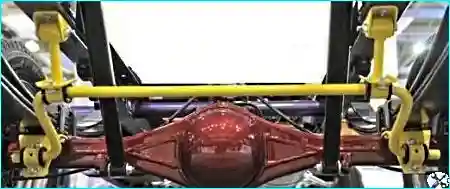
To reduce roll in turns and improve handling, the suspension design uses an anti-roll bar.
The middle part of the U-shaped round section rod of the stabilizer is attached to the car frame through struts and rubber cushions.
The ends of the rod are connected to the rear axle housing through brackets with bushings.
Possible malfunctions of the rear suspension
Cause of malfunction (Remedy)
- 1. Squeak in the springs:
- Worn plastic anti-squeak pads between the spring leaves, rubber pads under the clamps or rubber bushings - Replace worn parts
- 2. Vehicle body roll:
- Settlement of one spring or breakage of spring leaves - Replace the spring or defective leaves
- 3. Offset of the rear wheel track relative to the front when driving straight:
- Settlement or breakage of springs - Replace springs
- Long-term operation of an overloaded vehicle - Replace springs
- 4. Metallic knocking sound when suspension breaks down:
- Loss of shock absorber efficiency - Replace shock absorbers
- Destruction of the rear suspension rubber buffer or additional upper buffer - Replace defective parts
- 5. Reduced shock absorber efficiency:
- Worn shock absorber bushings - Replace shock absorbers
- Fluid leak from shock absorber - Replace shock absorber
Checking the condition of rear suspension components
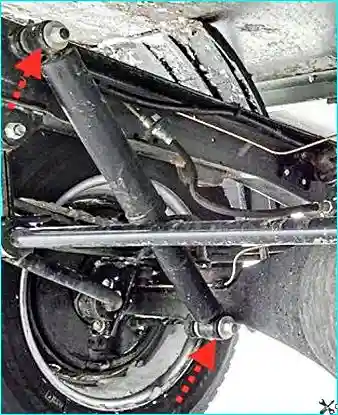
Inspect the lower and upper rubber-metal hinges of the shock absorbers
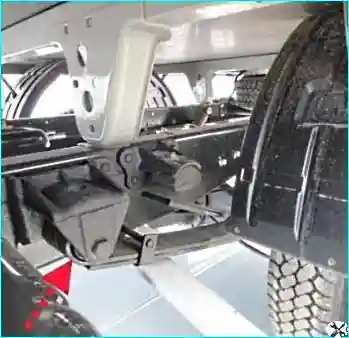
We examine the rubber-metal hinges of the front ends of the springs
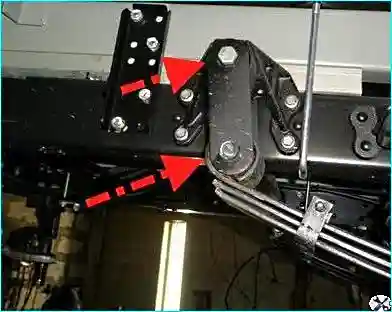
We examine the rubber-metal hinges of the rear ends of the springs
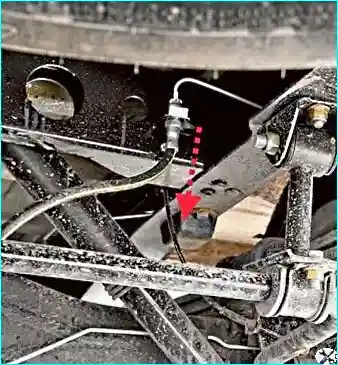
Inspecting the cushions of additional springs
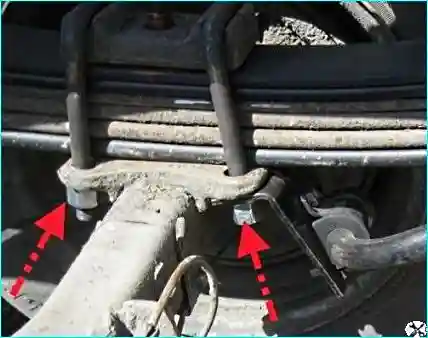
Inspecting the compression buffers
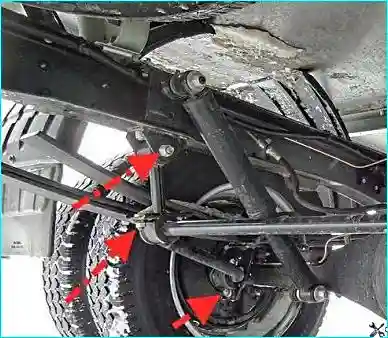
Checking the tightening of the U-bolt nuts springs
We check the tightening of the threaded connections and the condition of the rubber hinges of the rear suspension stabilizer

Inspect the shock absorbers.
If the leaking oil covers more than half of the shock absorber body, it is considered faulty.
Pay attention to the exhaust system.
Extraneous knocks are often mistaken for knocks in the rear suspension.
Using non-standard parts or breaking muffler suspension elements can cause knocking, especially when revving.
To check, stop the engine, inspect the exhaust system, check the reliability of the fastening and suspension of the exhaust system.
Holding the end of the exhaust pipe, swing the muffler up and down and from side to side - there should be no knocking.





